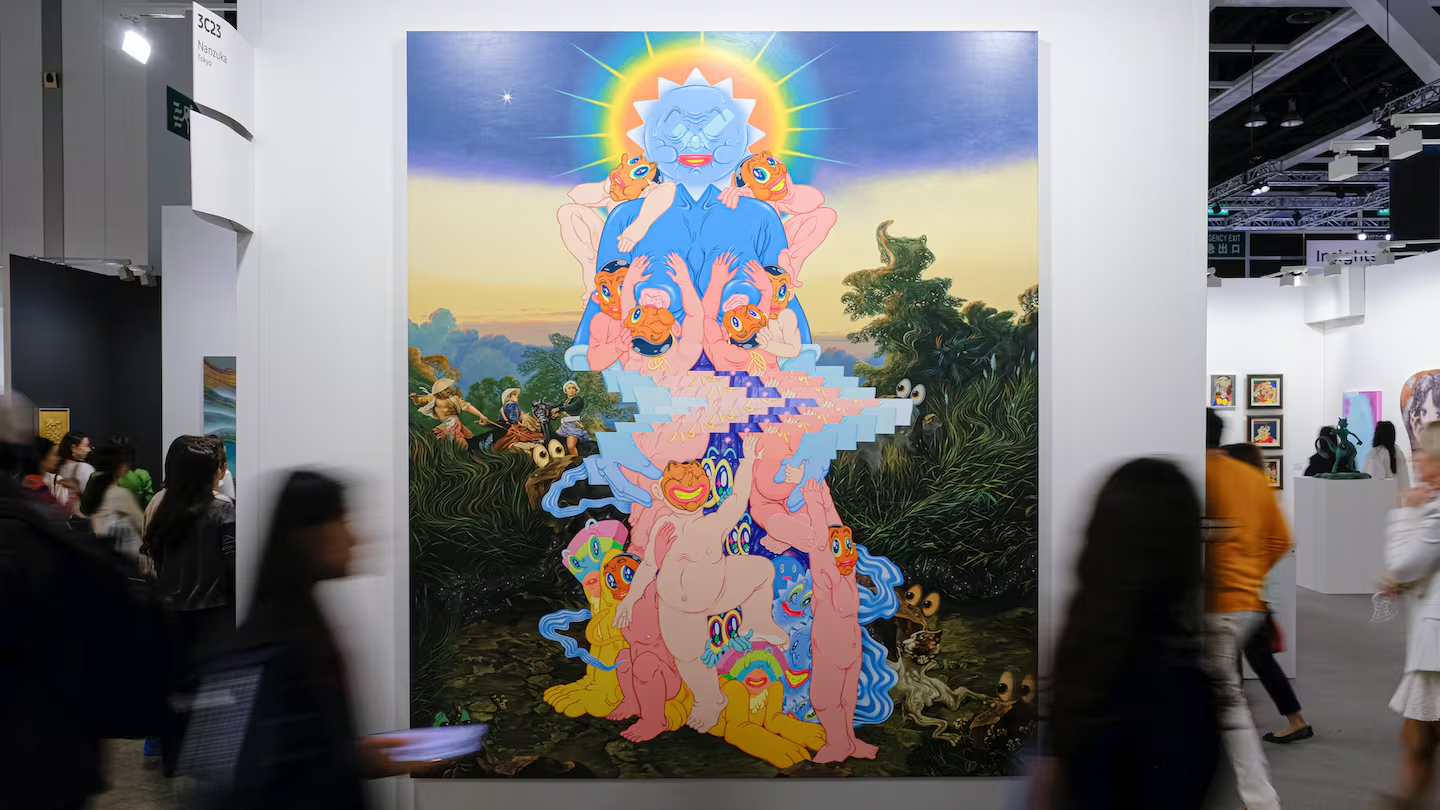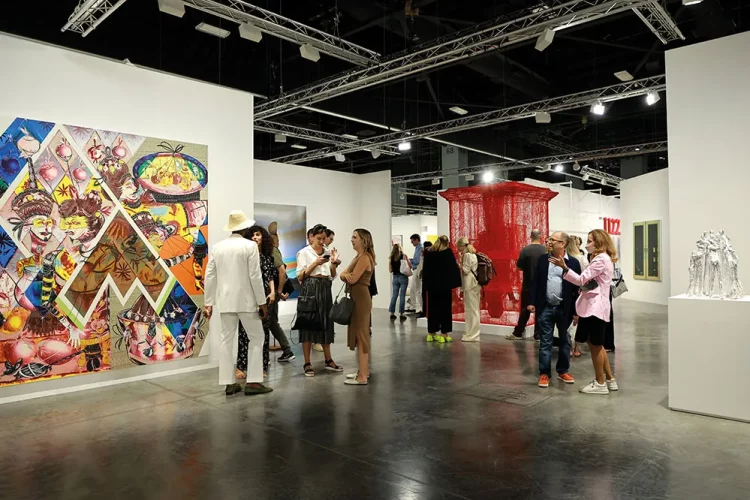A Story of Change
In 1987, at Christie’s in London, Vincent van Gogh’s Sunflowers was sold for nearly $40 million, breaking records and shocking the world. Fast forward to 2021: Christie’s once again made headlines, but this time not for a painting. Instead, a purely digital artwork, Beeple’s Everydays: The First 5000 Days, sold for $69 million in the form of a non-fungible token (NFT).
This contrast between two moments—one defined by the power of traditional auction houses and the other by blockchain technology—captures the radical transformations shaking the art market. From gilded auction rooms to decentralized digital ledgers, from oil on canvas to pixels on a screen, the art market has become a theater where history and innovation collide.
Auction Houses: The Old Gatekeepers
The Aura of Tradition
For centuries, auction houses like Christie’s and Sotheby’s served as the arbiters of cultural and financial value. Their auctioneer hammers symbolized authority, transparency, and trust. Buyers and sellers relied on their networks, expertise, and prestige to determine what art was worth.
The Business Model
- Primary function: Matching sellers with buyers in a competitive environment.
- Revenue streams: Commissions, buyer’s premiums, and private sales.
- Global expansion: Branches in New York, London, Hong Kong, Dubai.
Auction houses not only sold art but also curated history. Their decisions shaped artists’ reputations and determined which artworks would enter museums, collections, or obscurity.
The Criticisms
- Elitism: Access was restricted to wealthy collectors.
- Opaque pricing: Valuations were not always transparent.
- Market concentration: A handful of houses dominated global trade.
The Digital Earthquake: NFTs Enter the Stage
What Are NFTs?
Non-fungible tokens (NFTs) are unique digital assets recorded on blockchain. They provide verifiable ownership and scarcity for digital files—whether images, music, or videos.
Why They Matter in Art
- Ownership of the intangible: For the first time, digital art could be owned, bought, and sold as scarce assets.
- Direct-to-consumer sales: Artists bypass galleries and sell directly on platforms like OpenSea or SuperRare.
- Global participation: Anyone with internet access and cryptocurrency can enter the market.
The Beeple Moment
The $69 million sale at Christie’s in 2021 symbolized the crossover: the old guard of auction houses legitimized the new world of NFTs. This event marked the convergence of tradition and disruption.
Between Two Worlds: Convergence and Tension
- Auction Houses Embracing Tech
- Christie’s and Sotheby’s now host NFT sales, bridging elite collectors and crypto-native buyers.
- Hybrid auctions combine physical art with digital twins (e.g., sculptures with NFT certificates).
- Artists and Collectors Caught in Transition
- Established artists explore NFTs (Damien Hirst’s The Currency).
- Young digital artists gain global fame overnight.
- Collectors debate whether NFTs are art or speculation.
- Cultural Clash
- Auction houses prize history, provenance, and legacy.
- NFT culture values decentralization, memes, and speed.
- One side embodies tradition; the other celebrates disruption.
Challenges in the Contemporary Art Market
1. Speculation and Volatility
- Traditional markets already face speculation, but NFTs amplify it.
- Prices of NFTs can skyrocket one week and collapse the next.
- Critics fear bubbles undermine cultural credibility.
2. Authenticity and Trust
- Provenance is auction houses’ strength, but digital art raises questions about duplication and piracy.
- Blockchain solves ownership verification, but platforms remain vulnerable to fraud.
3. Accessibility vs. Exclusivity
- Auction houses are elite; NFTs promise openness.
- Yet high transaction fees (gas fees) and technical barriers exclude many.
- The dream of democratization is unevenly realized.
4. Environmental Concerns
- Traditional art logistics involve shipping and storage.
- NFTs raise concerns about blockchain energy use (though Ethereum’s shift to proof-of-stake mitigates this).
5. Regulatory Uncertainty
- Taxation, money laundering, and intellectual property laws lag behind digital innovation.
- Auction houses navigate strict legal frameworks; NFT platforms often do not.
Opportunities in Transformation

- New Audiences
- NFTs attract millennials and Gen Z investors who previously ignored traditional art.
- Auction houses expand relevance by engaging with digital natives.
- Hybrid Art Forms
- Artists explore augmented reality, interactive installations, and physical-digital hybrids.
- Collectors can own both tangible and intangible value.
- Global Market Expansion
- NFTs dissolve geographic barriers.
- Auction houses expand into emerging economies, from Middle East to Africa.
- Data Transparency
- Blockchain records transactions permanently.
- This transparency challenges the opacity of traditional art sales.
Case Snapshots
- Christie’s NFT Expansion: After Beeple, Christie’s launched dedicated NFT sales, signaling that digital art was here to stay.
- Sotheby’s Metaverse: The house created a virtual gallery in Decentraland, merging tradition with the metaverse.
- Damien Hirst’s The Currency: Buyers chose between owning a physical painting or its NFT version, blurring lines between mediums.
- Pak’s NFT Project: Sold for $91 million on Nifty Gateway, rivaling historic auction prices.
These cases highlight both disruption and continuity in the art world.
Looking Forward: Scenarios for the Future
Scenario 1: Harmonious Convergence
Auction houses and NFT platforms coexist. Hybrid auctions dominate, blending prestige with accessibility. Art becomes both an investment and a participatory culture.
Scenario 2: Market Fragmentation
NFT platforms grow independently, attracting younger generations, while auction houses remain elite institutions for traditional collectors. A generational divide emerges.
Scenario 3: Collapse and Rebuilding
If speculation crashes NFT markets, credibility could decline. Traditional players might reclaim dominance, but digital art will still persist in some form.
Commentary: Beyond Price and Hype
The true transformation is not just financial; it is cultural. The art market is now a battlefield of narratives:
- Is art about scarcity or creativity?
- Should cultural value be measured in dollars or meaning?
- Can technology empower artists without stripping art of its aura?
The answer may be both/and rather than either/or. Auction houses preserve continuity, while NFTs introduce dynamism. Together, they reflect a world where culture, finance, and technology are inseparable.
Conclusion
From Van Gogh’s Sunflowers to Beeple’s Everydays, the art market has undergone a radical journey. Auction houses once controlled the gates of value; NFTs blew those gates open.
The challenge is not to decide which system is “better,” but to recognize how both coexist, collide, and coevolve. Auction houses embody tradition and trust, while NFTs embody disruption and democratization. Their interplay defines the contemporary art market.
Ultimately, the art market reflects the contradictions of our time: the desire for both permanence and novelty, exclusivity and openness, cultural meaning and financial speculation. Whether in gilded halls or blockchain ledgers, art remains what it has always been: a mirror of human imagination, shaped by the tools and economies of its age.
















































